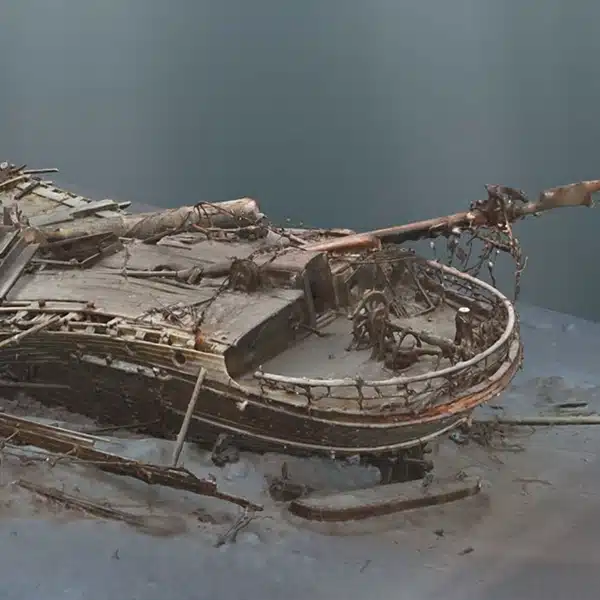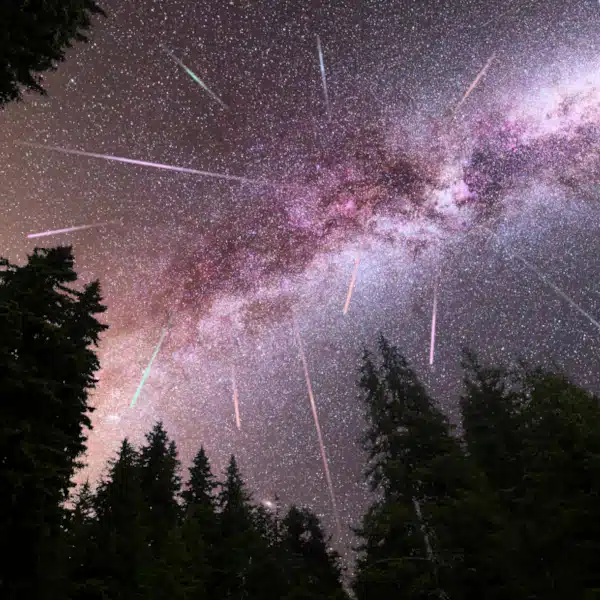
Astronaut Buzz Aldrin, lunar module pilot, walks on the surface of the Moon. Astronaut Neil A. Armstrong took this photograph with a 70mm lunar surface camera.
On July 20, 1969 mankind took “one giant step” as the Apollo 11 mission touched down on the Moon. As the first mission to bring humans to the Moon, it remains one of mankind's most incredible accomplishments. 50 years after the historic Apollo 11 landing, the mission continues to capture the imagination of the public and is held as a shining example of what humans can achieve.
Nearly 1 million spectators flooded the highways and beaches in the vicinity of the Kennedy Space Center in Florida to watch liftoff on July 16, 1969. With the American space program seen as a key to exhibiting national power—particularly over the Russians during this period of the Cold War—citizens were captivated by the Space Race. This translated into enormous national pride when Apollo entered the lunar orbit on July 19, 1969—something never before accomplished.
A three-man crew took part in the historic mission—Commander Neil Armstrong, Lunar Module Pilot Edwin “Buzz” Aldrin Jr., and Command Module Pilot Michael Collins. Together they forged ahead and just one day after entering lunar orbit, Armstrong uttered the famous words, “The Eagle has landed.” Apollo 11's lunar module, Eagle, touched down on the Moon at 4:17pm EDT on July 20, 1969. Just six and a half hours later, Armstrong would step off the Eagle and place his feet on the lunar surface for the first time.
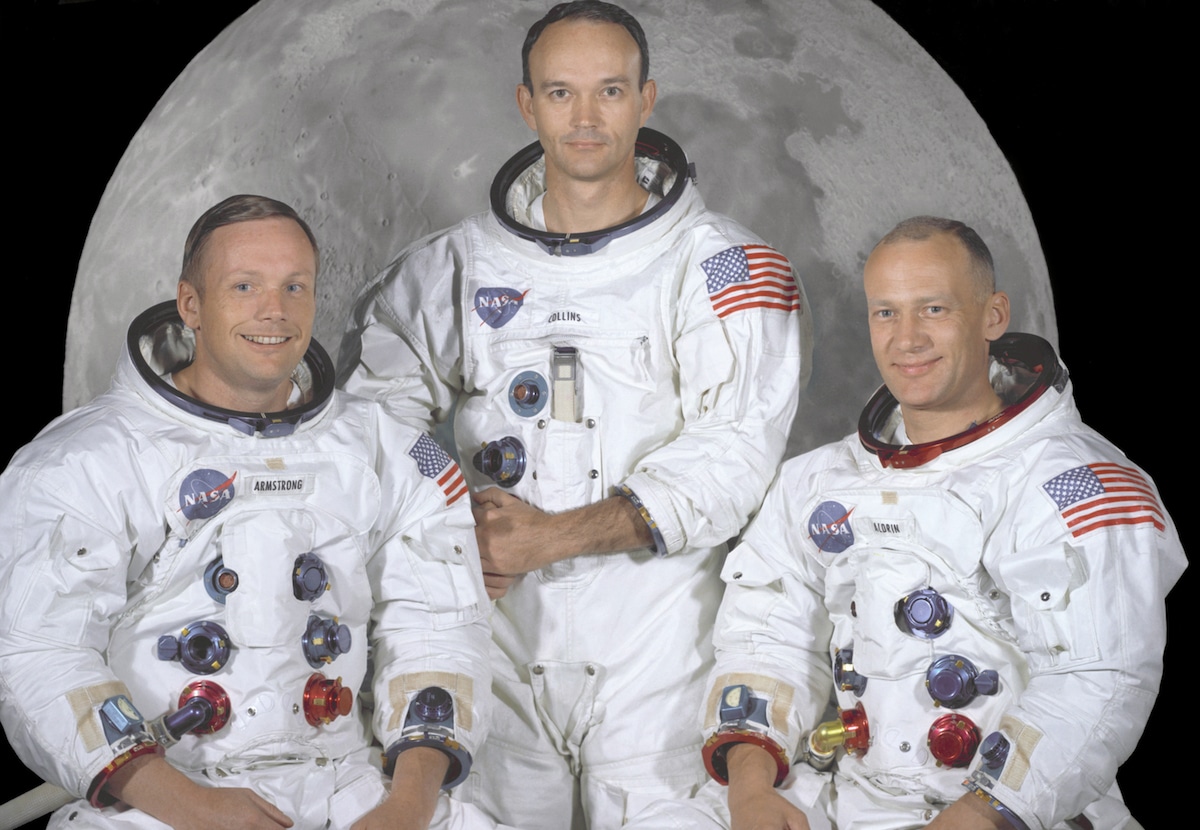
Crew of the Apollo 11 lunar landing mission. From left to right: Commander, Neil A. Armstrong, Command Module Pilot, Michael Collins, and Lunar Module Pilot, Edwin “Buzz” Aldrin Jr.
Remarkably, the crew documented their mission thoroughly. The now-famous photographs, taken with a Hasselblad mounted on Armstrong's spacesuit, captured these incredible moments. Most photographs that were taken on the Moon show Aldrin, who exited Eagle just 19 minutes after Armstrong, as the Commander was the one taking most of the photographs.
Though the mission was not without issues, including nearly landing in an area with craters and breaking a switch that would allow them to depart the Moon, the heart, courage, and skill of all involved in the mission made it a success. Returning home, the crew were hailed as heroes, taking part in ticker-tape parades in New York and Chicago attended by an estimated 6 million people. A 45-day global tour saw them visit 24 countries and meet with world leaders, as the entire world was enthralled by this stunning achievement.
The technology developed for the Apollo mission continues to endure today—in shock absorbers that keep buildings upright during earthquakes, medical monitoring devices, and heat resistant fabrics used by firefighters. Since 1969, the American space program has continued to develop and thrive, with NASA continuing to develop plans for human missions to Mars.
To celebrate the 50th anniversary of the Apollo 11 spaceflight, enjoy these historic photographs from NASA.
The three-man crew of Neil Armstrong, Buzz Aldrin, and Michael Collins went through extensive training to prepare for the first mission to the Moon.
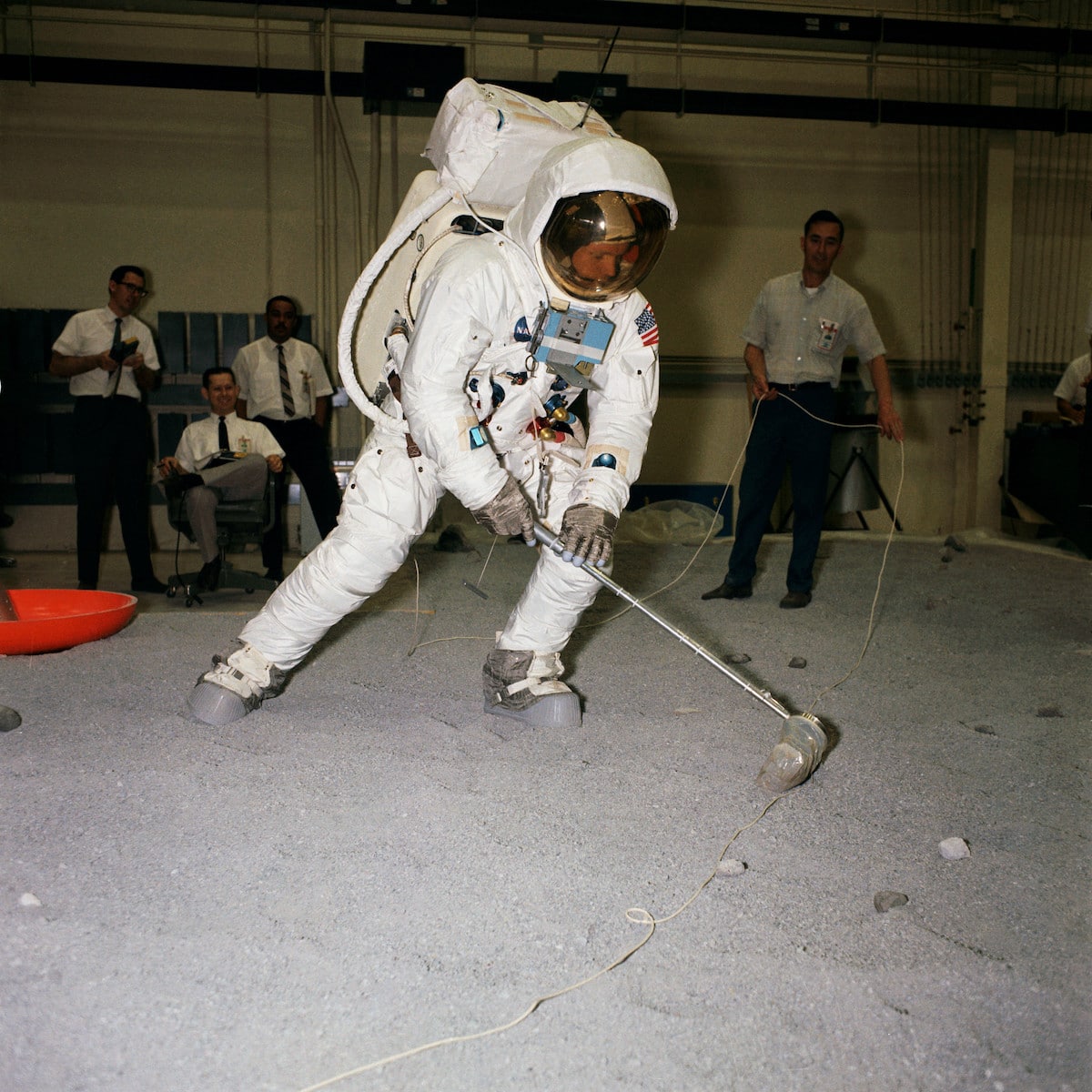
Neil A. Armstrong, wearing an Extravehicular Mobility Unit (EMU), participates in lunar surface simulation training on April 18, 1969, in Building 9, Manned Spacecraft Center (now Johnson Space Center). In the months immediately before the Apollo 11 mission, the crew and the ground support teams had an intense schedule of training and simulation. Here, Armstrong practices scooping up a lunar sample.
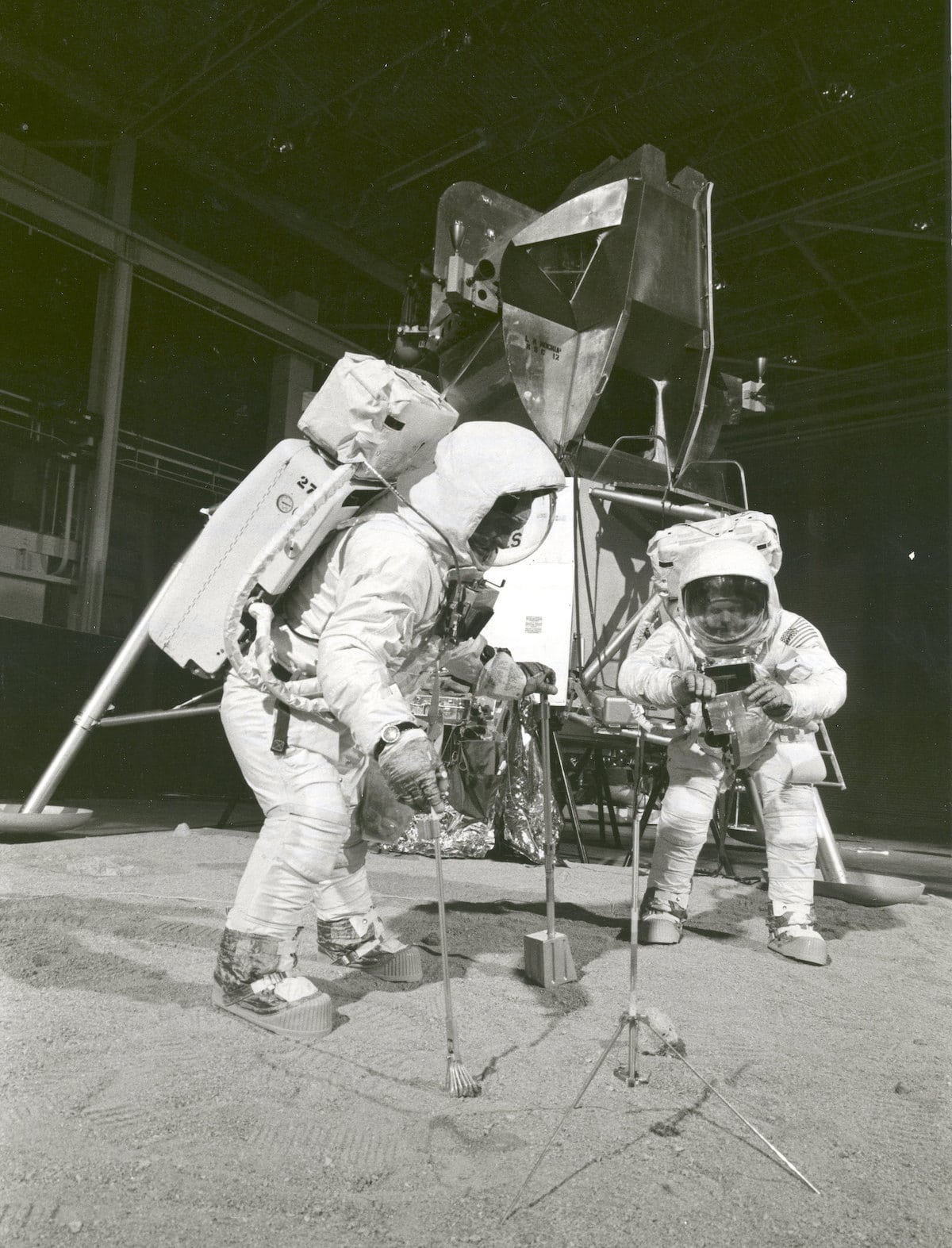
Two members of the Apollo 11 lunar landing mission participate in a simulation of deploying and using lunar tools on the surface of the Moon during a training exercise on April 22, 1969. Astronaut Buzz (Aldrin Jr. on left), lunar module pilot, uses a scoop and tongs to pick up a soil sample. Astronaut Neil A. Armstrong, Apollo 11 commander, holds a bag to receive the sample. In the background is a Lunar Module mockup.
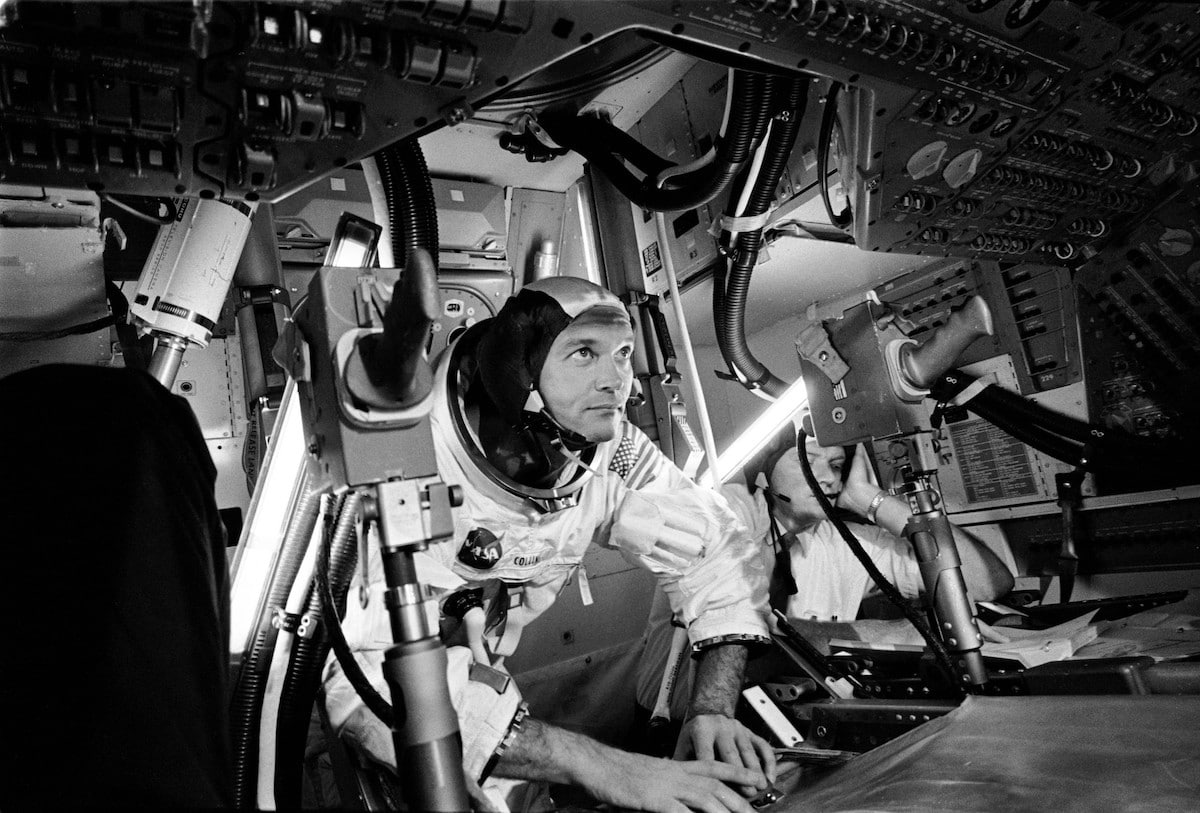
With 18 days before launch, Apollo 11 Command Module (CM) pilot Michael Collins practices docking hatch removal from CM simulator at NASA Johnson Space Center.
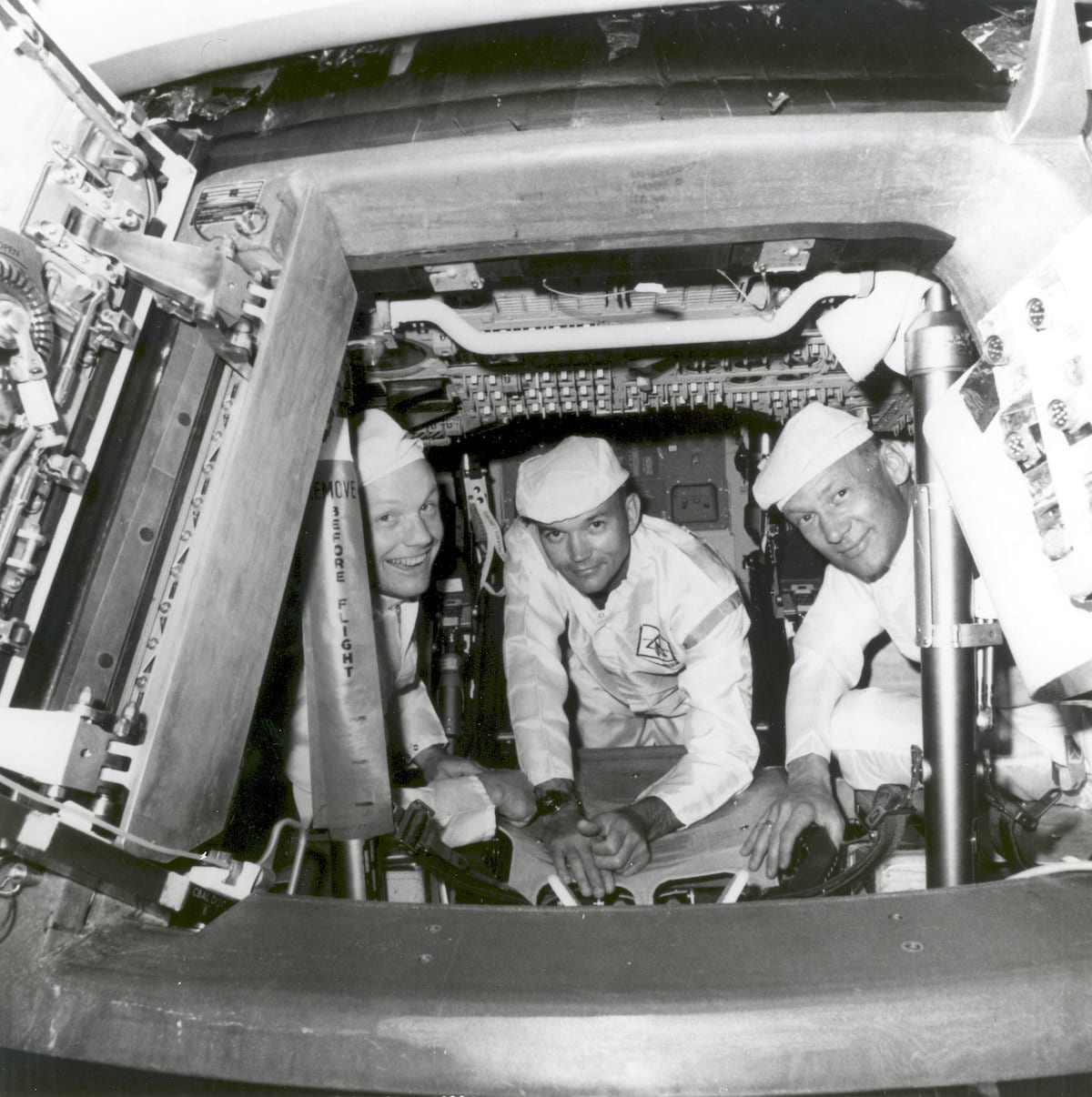
The Apollo 11 crew conducting a crew compartment fit and functional check, of the equipment and storage locations, in their command module. Peering from the hatch are from left, Neil Armstrong, commander; Michael Collins, command module pilot; and Buzz Aldrin, lunar module pilot. Armstrong and Aldrin later conducted a similar check aboard the lunar module, which carried them down to the lunar surface on July 20, 1969.
Apollo 11 launched from the Kennedy Space Center in Florida on July 16, 1969.
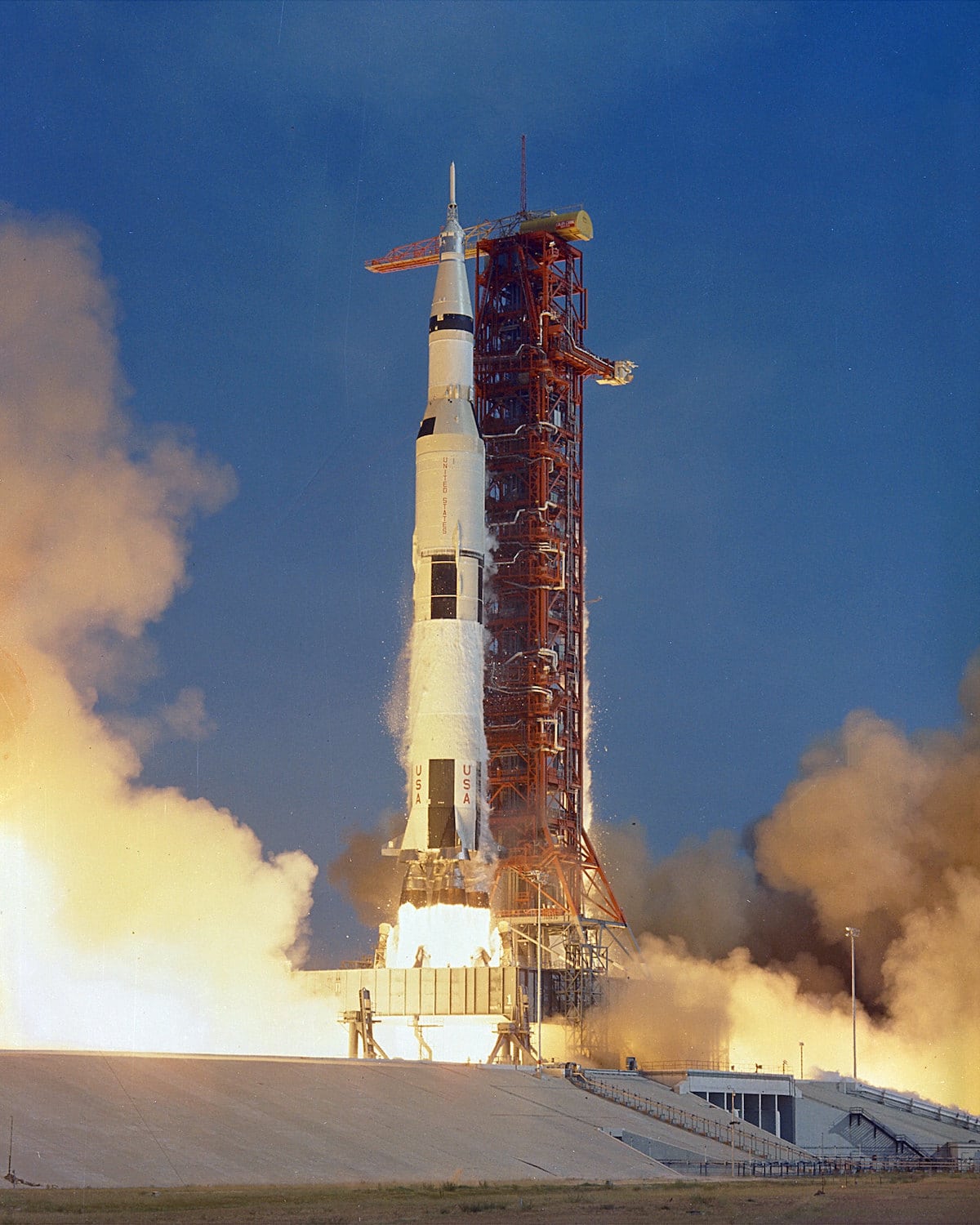
The Apollo 11 Saturn V space vehicle lifts off at 9:32 a.m. EDT July 16, 1969, from Kennedy Space Center's Launch Complex 39A.

At 9:32 a.m. EDT, the swing arms move away and a plume of flame signals the liftoff of the Apollo 11 Saturn V space vehicle.
An estimated 1 million people crowded nearby highways and beaches to get a glimpse of liftoff.
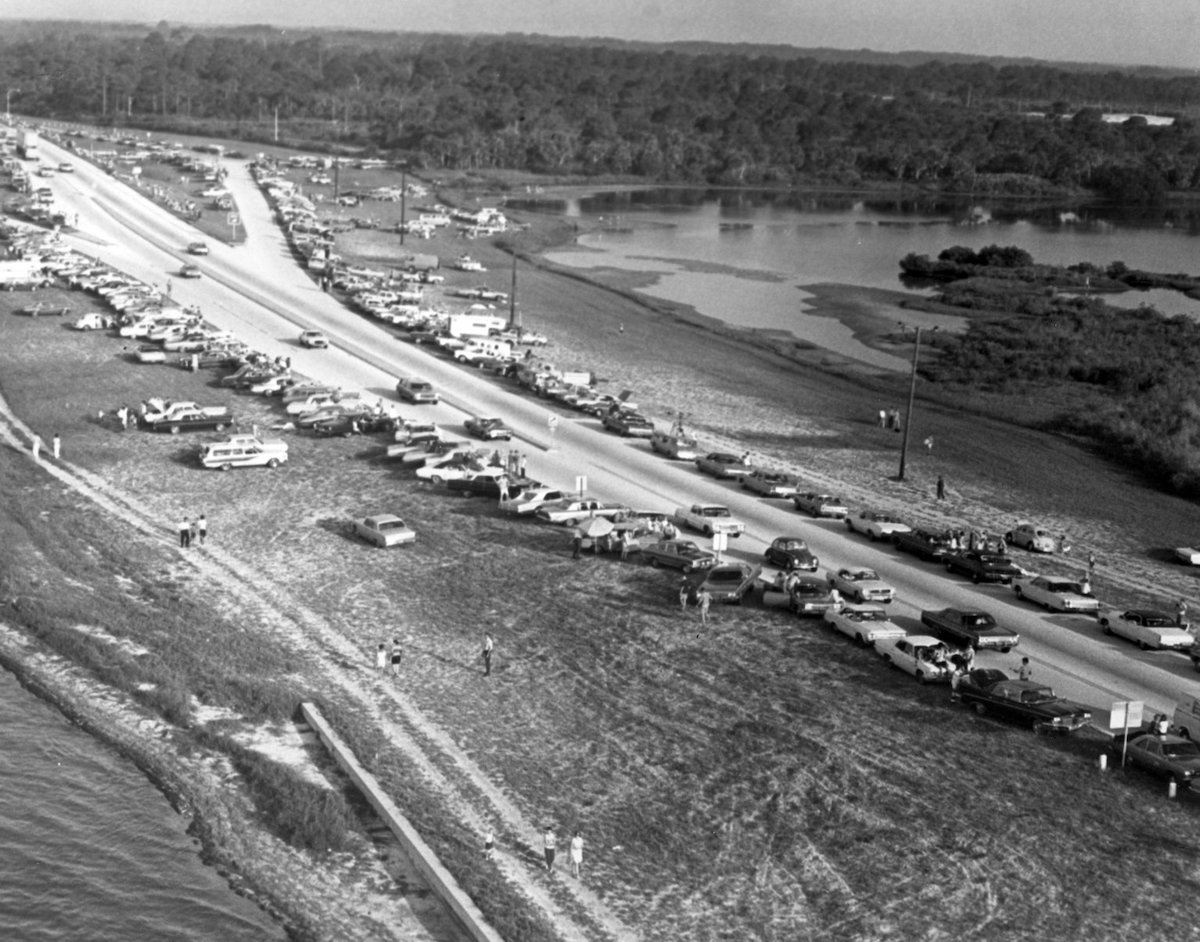
This is a view of a roadway near the NASA Kennedy Space Center (KSC), shortly before dawn on July 16, 1969, where spectators from all over the world jammed into KSC to watch the liftoff of Apollo 11.
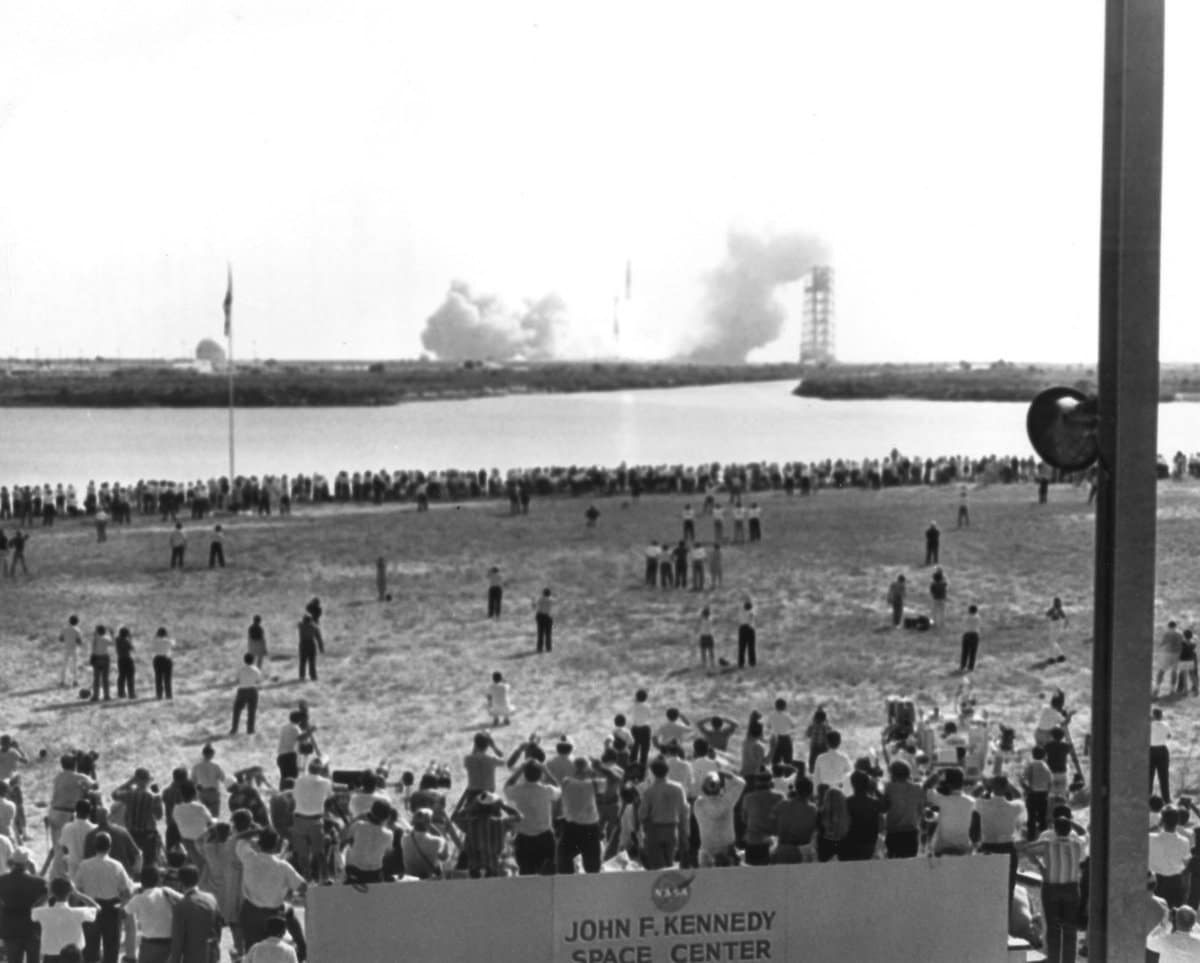
At the press site, thousands of news reporters from the world over watched, taking many pictures, as the Saturn V launch vehicle (AS-506) lifted off to start Apollo 11 on its historic mission to land on the Moon. The total number of news people officially registered to cover the launch was 3,497.
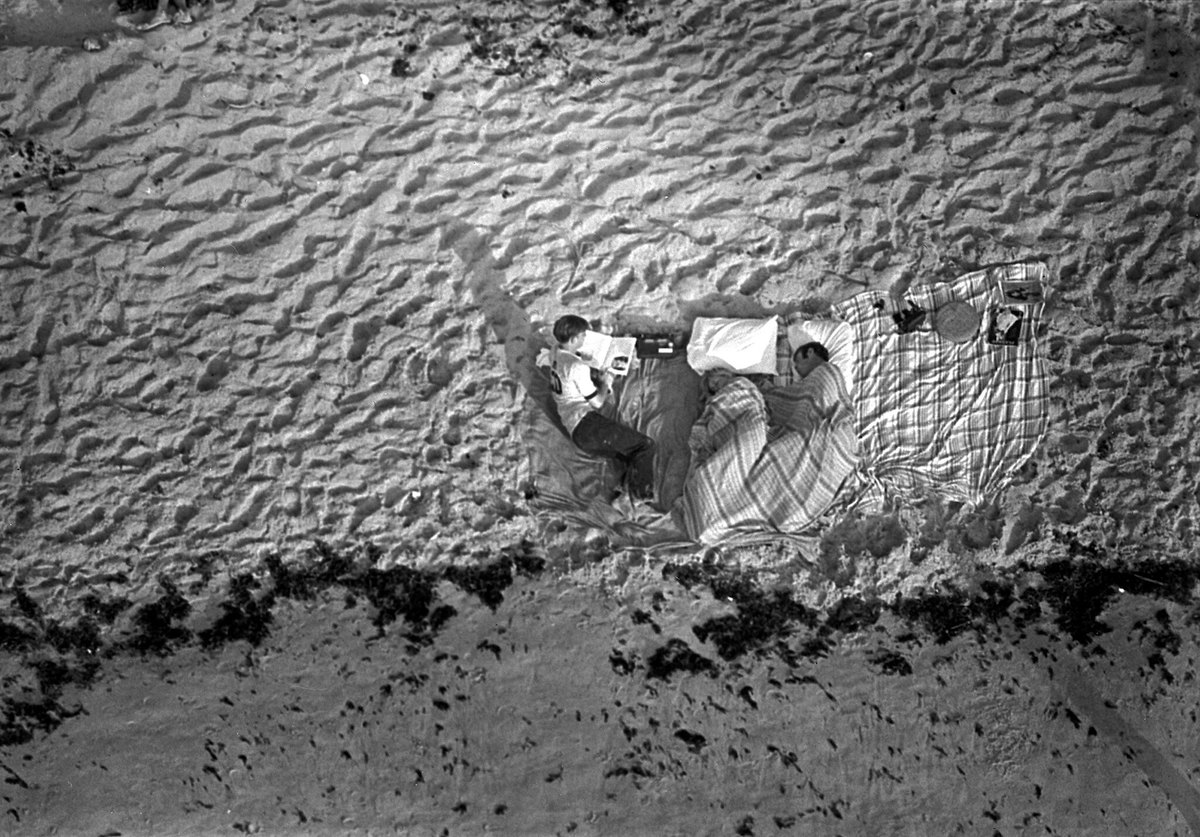
These three were among the thousands of persons who camped on beaches and roads adjacent to the Kennedy Space Center to watch the Apollo launch. An estimated one million persons visited the Spaceport area to see the historic flight.
The successful liftoff was a relief for all involved in the program, not just the astronauts.
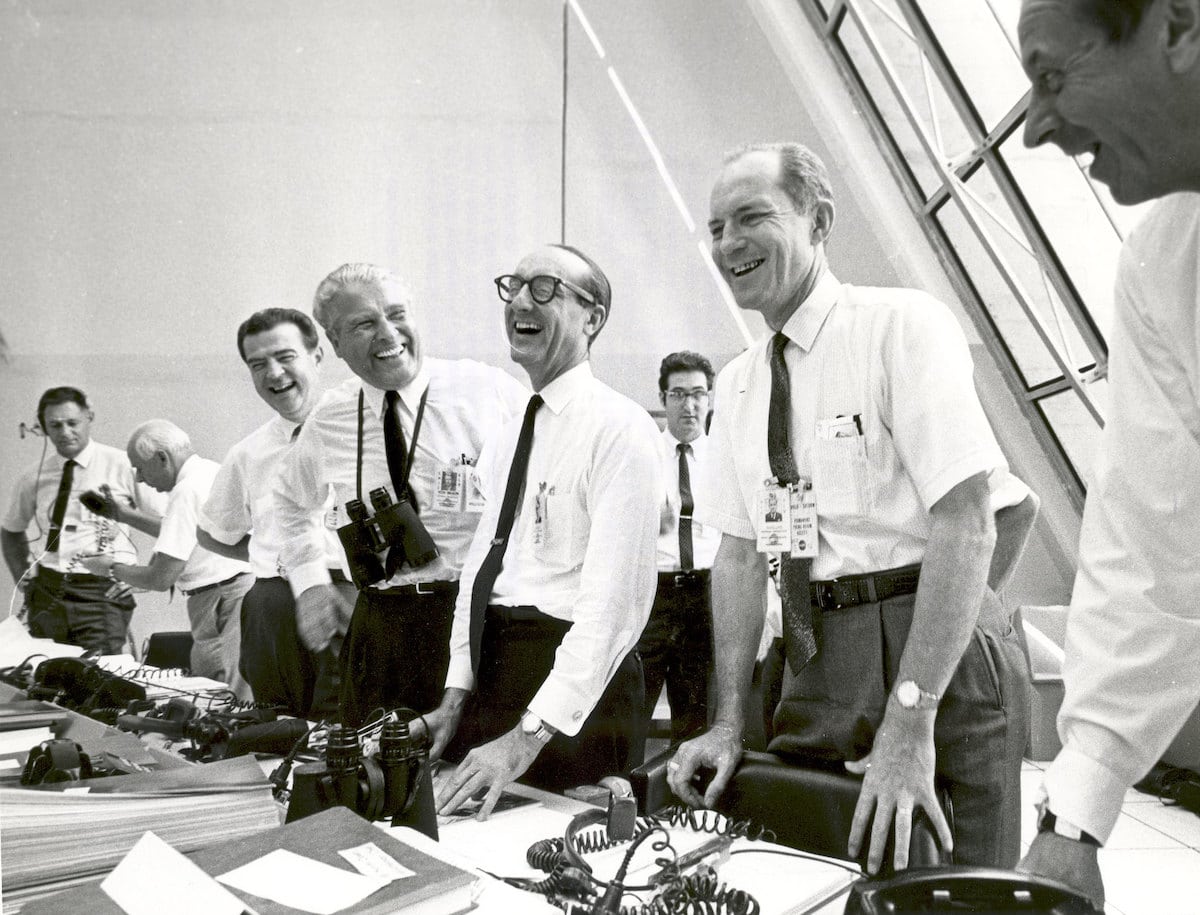
Apollo 11 mission officials relax in the Launch Control Center following the successful Apollo 11 liftoff on July 16, 1969. From left to right are: Charles W. Mathews, Deputy Associate Administrator for Manned Space Flight; Dr. Wernher von Braun, Director of the Marshall Space Flight Center; George Mueller, Associate Administrator for the Office of Manned Space Flight; Lt. Gen. Samuel C. Phillips, Director of the Apollo Program
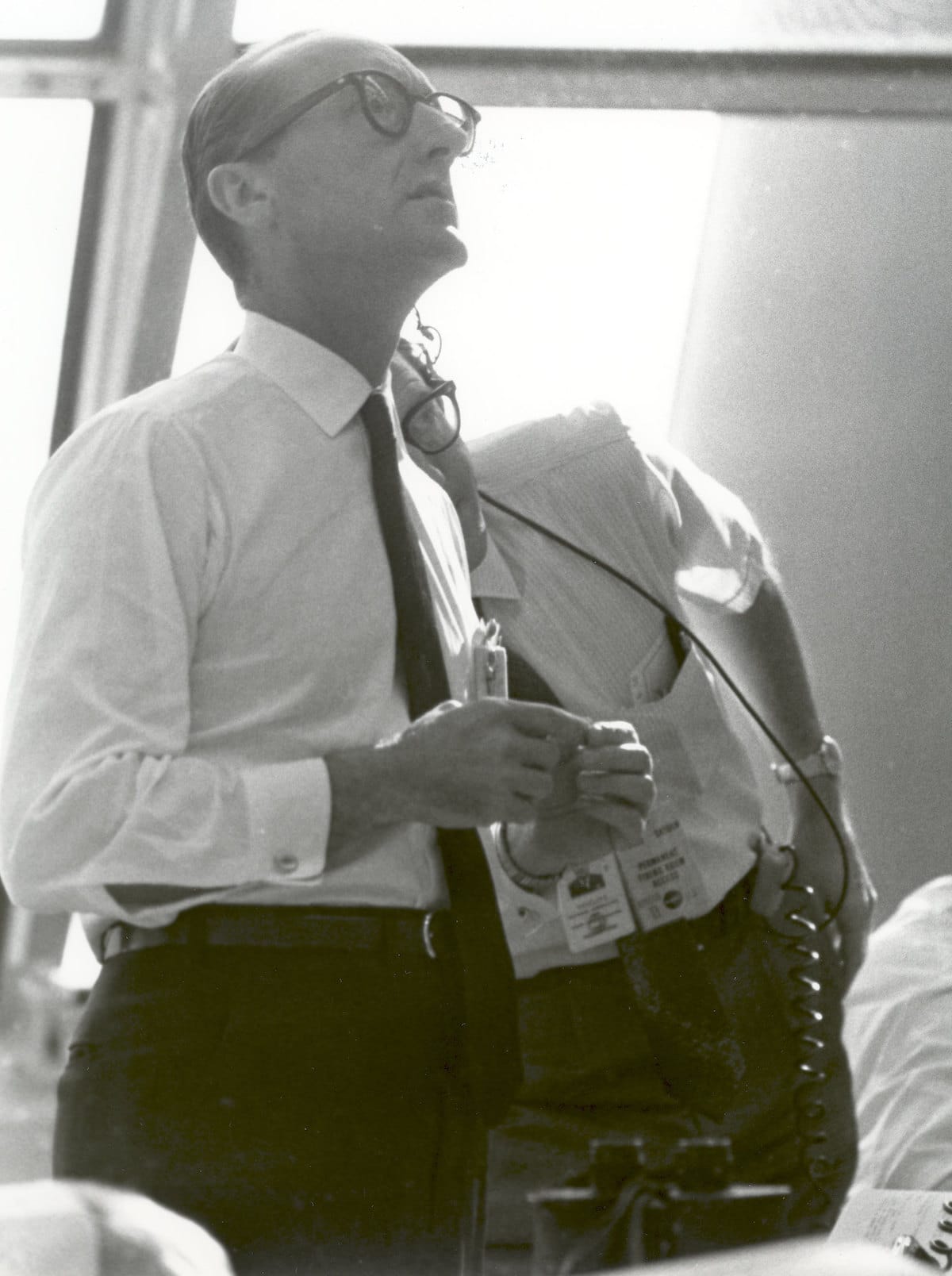
Dr. George E. Mueller, Associate Administrator for Manned Space Flight, NASA, follows the progress of the Apollo 11 mission. This photo was taken on July 16, 1969 in the Launch Control Center at the Spaceport on the morning of the launch.
On July 20, 1969, the lunar module Eagle touched down on the Moon.
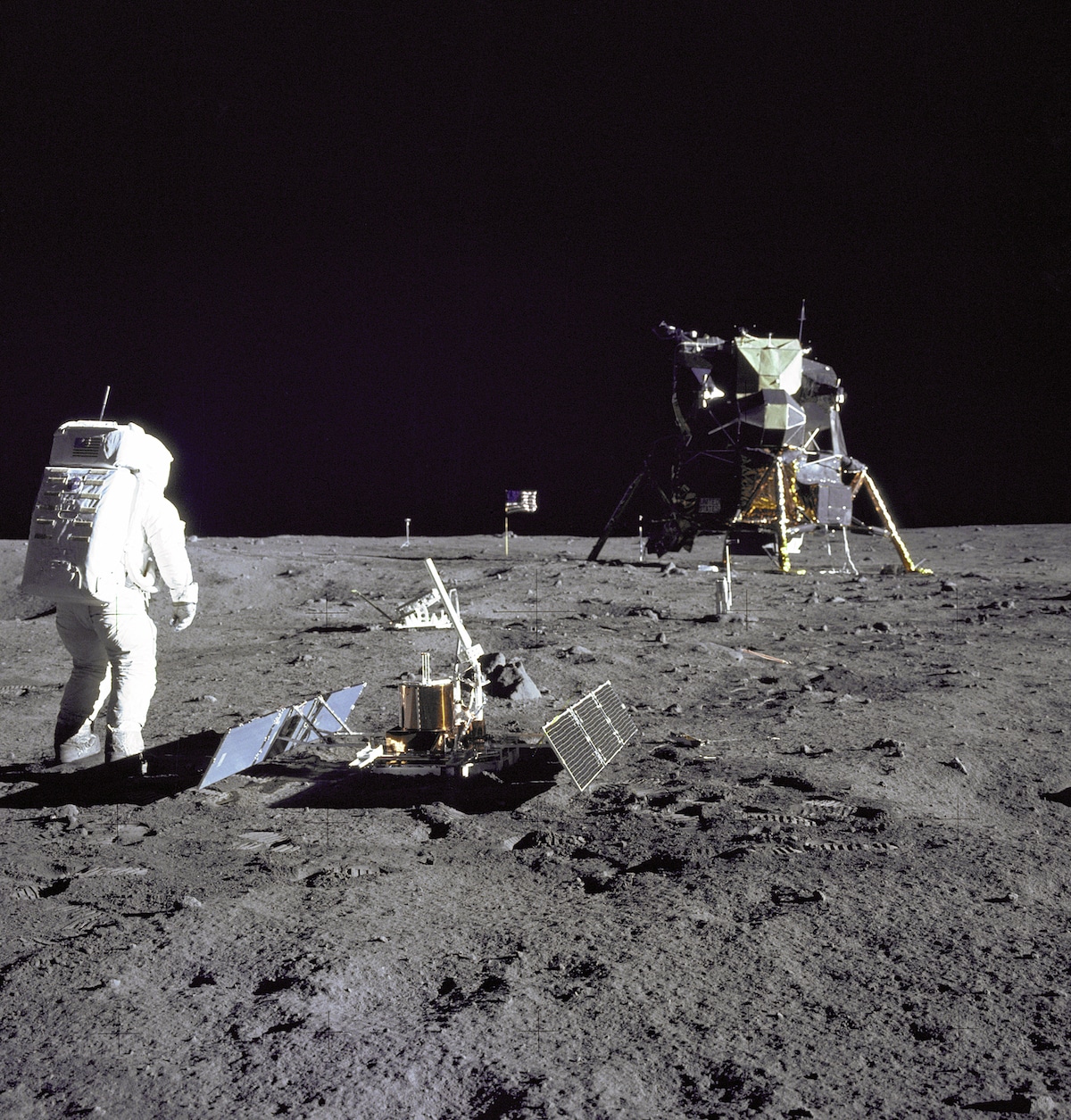
Edwin “Buzz” Aldrin Jr., Lunar Module pilot, is photographed during the Apollo 11 extravehicular activity on the Moon. He has just deployed the Early Apollo Scientific Experiments Package (EASEP). In the foreground is the Passive Seismic Experiment Package (PSEP); beyond it is the Laser Ranging Retro-Reflector (LR-3); in the center background is the United States flag; in the left background is the black and white lunar surface television camera; in the far right background is the Lunar Module “Eagle”.
About six and a half hours later, Neil Armstrong became the first man to walk on the Moon.
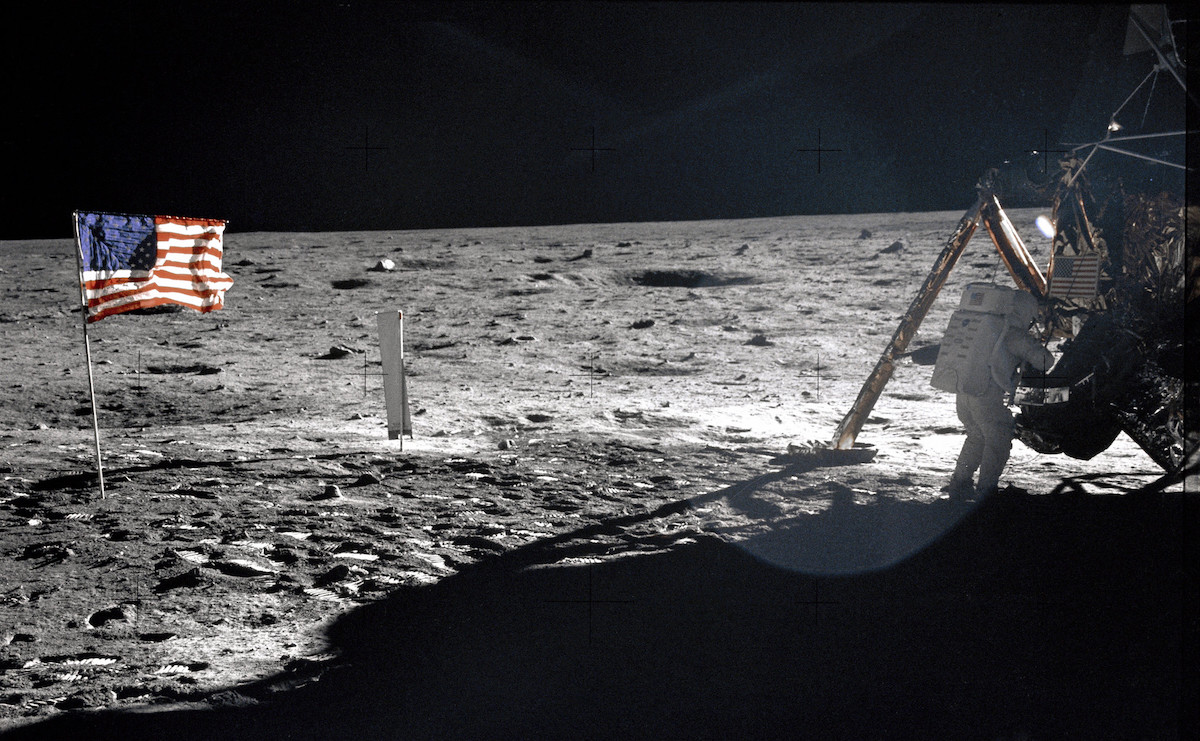
Neil Armstrong at the modular equipment storage assembly (MESA) of the Lunar Module “Eagle” on the historic first extravehicular activity (EVA) on the lunar surface. Astronaut Edwin “Buzz” Aldrin Jr. took the photograph with a Hasselblad 70mm camera. Most photos from the Apollo 11 mission show Buzz Aldrin. This is one of only a few that show Neil Armstrong (some of these are blurry).
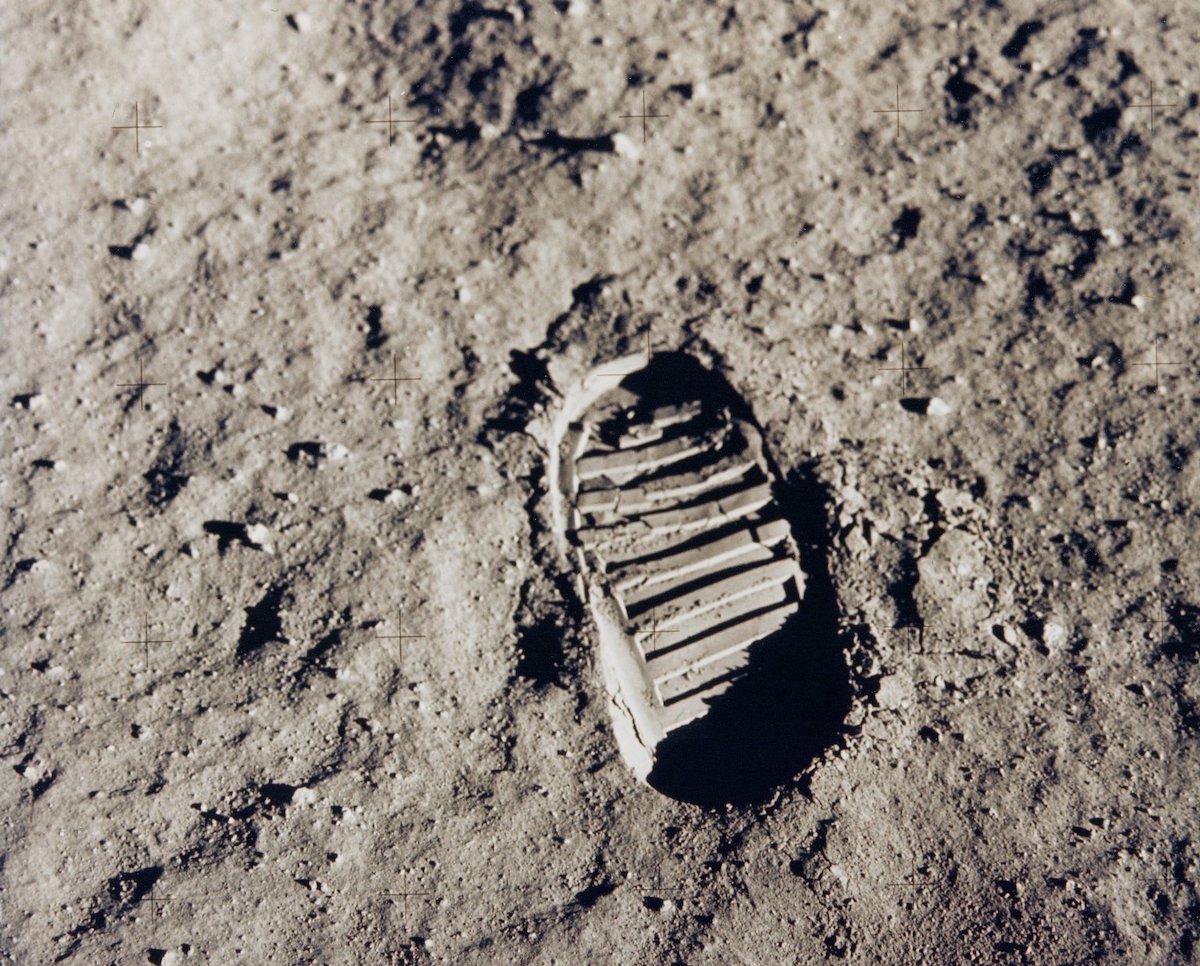
One of the first steps taken on the Moon, this is an image of Buzz Aldrin's bootprint from the Apollo 11 mission.











































































